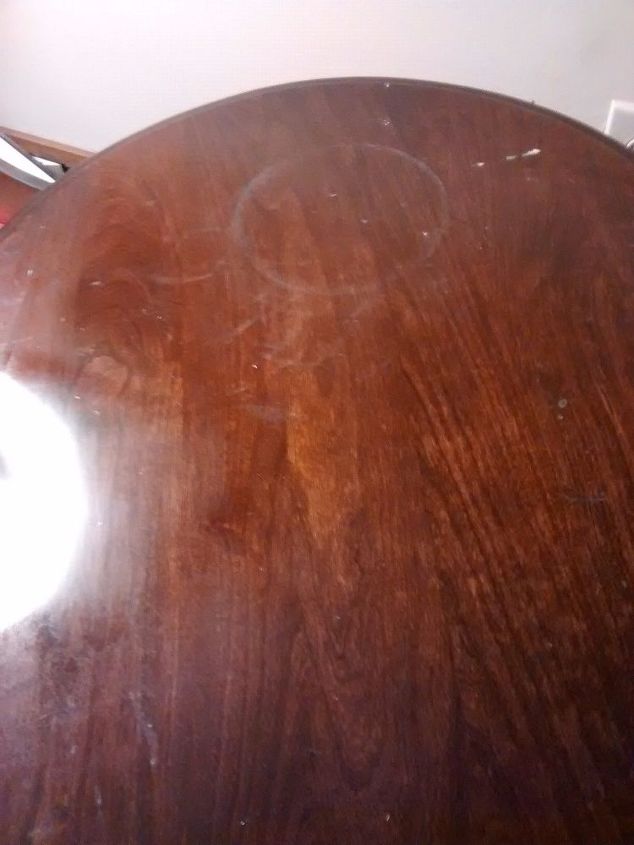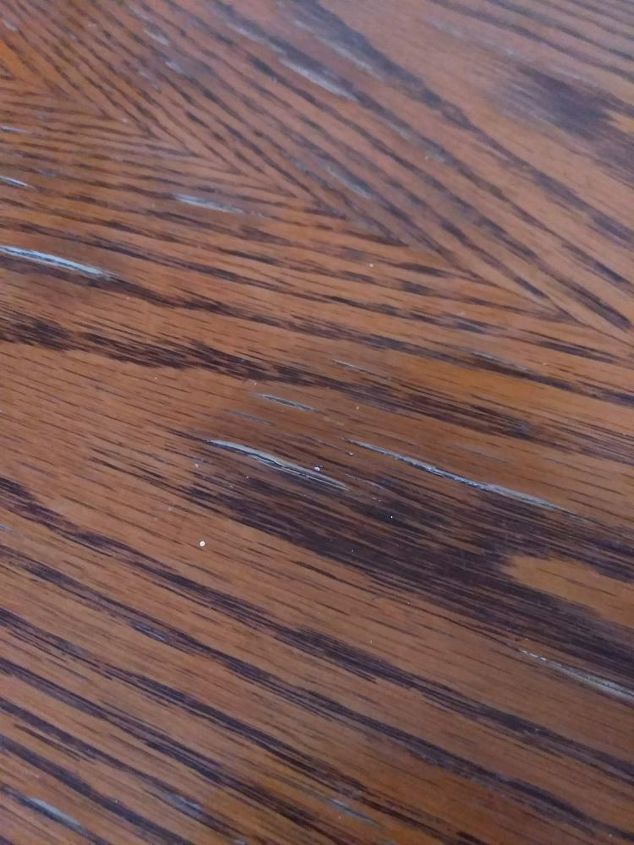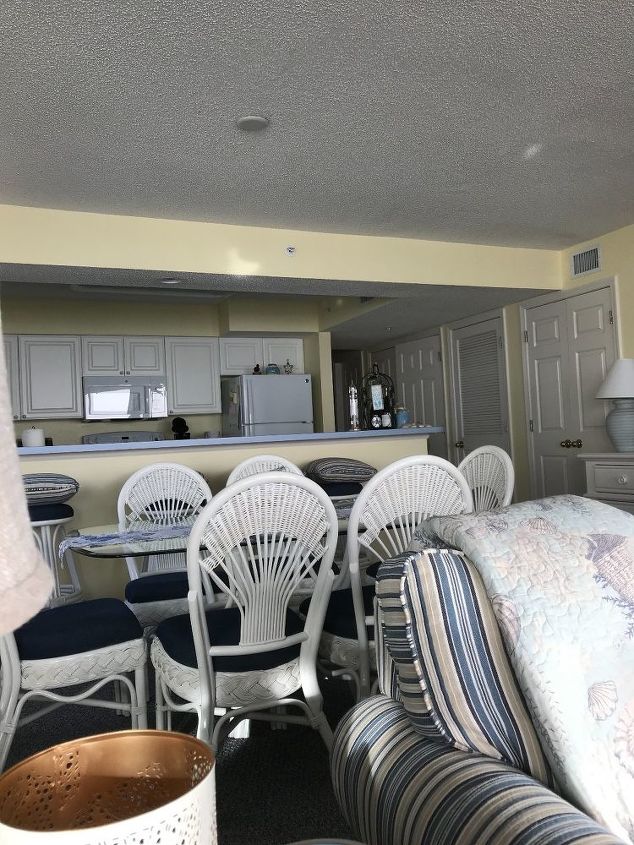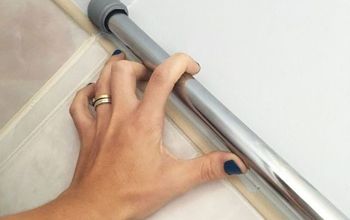How do I refinish a scratched coffee table & white marked end tables?
Related Discussions
Vinyl plank flooring vs pergo (laminate)
I currently have stinky dirty carpeting in my living room and I want to replace it with a durable flooring that can stand up to dogs and kids.
How to remove popcorn ceiling that has been painted?
Does having a paint over a popcorn ceiling change how I'd remove the popcorn ceiling?
How do I refinish my dull, scratched cherry veneer table top?
How do I refinish this 100 year old table?
Any idea on how to best refinish this table?
How do I refinish a split, peeling veneer compressed wood table?
I thought I would remove the veneer, sand and stain. But.. I found out that it was not solid wood underneath, but compressed wood. I would like to keep this table, bu... See more
How can I update a glass dining room table? (Scratched, wicker chairs)
The furniture is original to a beach condo. Still in good shape but top is scratched and glass definitely requires upkeep. Thanks







if they are wood then sand down the finish, if the scratches are deep you can fill with some wood putty, wipe it all down and then apply the stain of your choice and then a varnish finish
White marks can be removed using a hot iron. Place cloth over white mark and hold iron for a few seconds at a time till white ring is gone. Worked great for me.
What material is the table made of Laminate or real wood
Assuming the tables are solid wood I would remove the existing finish either with a stripper, or sanding with an electric sander; but you probably could have to use both. Then sand and stain (this part can be tricky because different wood takes stain differently. I recommend you practice your stain on a scrap of wood that is as similar to the wood you are working with as you can get. Once the stain is dry you can apply a new finish. I am assuming the white marks you are talking about are from either wet or hot liquids in glasses that were sent on the table. That might take more work to remove the marks IF they are not surface only. If you don't have a palm sander I would suggest you buy one, along with sandpaper with varying degrees of grit (any home improvement store can help you if you don't know what to buy).
If the scratch or white marks continue to show after you have done the above you can either live with the scratch or marks, or (to at least this wood lovers horror) paint the items after preparing them to take the paint. It will be quite a bit of work but you will have the satisfaction of making the pieces beautiful again. Good luck and I hope you greatly enjoy your "new" pieces of furniture.
I used to use a product called Old English Scratch Cover for (light) or (Dark) wood and while polishing up the wood, it would cover small scratches and blend into the wood. An 8 ounce bottle at Walmart costs $4.32.
The answer I saw in pin.... said to use appropriate Sharpie colour marker pen. Another suggestion was to mix 1/2 cup of vinegar with 1/2 cup of olive oil then rub it on. Sorry but haven't tried either suggestions to can't verify if they work. If you do try them please let me know if anyone works.
I tried olive oil on this cherry coffee table when I first thought I would use fine steel wool on it. Regrettably, that didn't work. Would be afraid to use vinegar; fearful of stripping it (although might need to in the end. Thanks for your suggestions.
Good luck, for me the sanding is the fun part. The staining is the part I don't enjoy.
Real wood - cherry
Use ordernery walnuts just rub on surface then buff off
Break out of she'll first
Thanks
You could try using Mayonnaise as a polish after you have used the Iron.
Hello, hope this helps you out.
https://www.youtube.com/watch?v=A5AjjkTDAPQ